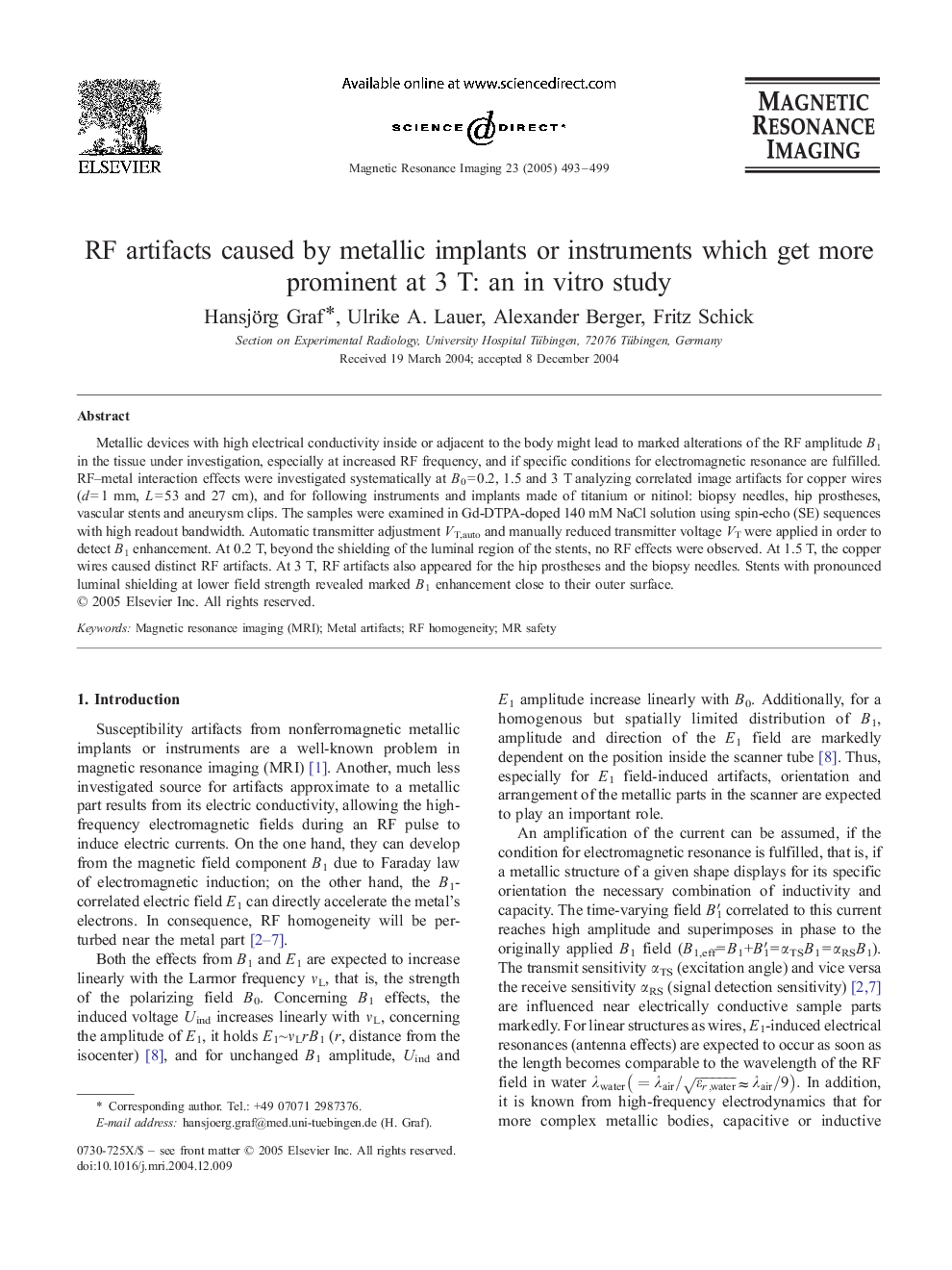| Article ID | Journal | Published Year | Pages | File Type |
|---|---|---|---|---|
| 10713740 | Magnetic Resonance Imaging | 2005 | 7 Pages |
Abstract
Metallic devices with high electrical conductivity inside or adjacent to the body might lead to marked alterations of the RF amplitude B1 in the tissue under investigation, especially at increased RF frequency, and if specific conditions for electromagnetic resonance are fulfilled. RF-metal interaction effects were investigated systematically at B0=0.2, 1.5 and 3 T analyzing correlated image artifacts for copper wires (d=1 mm, L=53 and 27 cm), and for following instruments and implants made of titanium or nitinol: biopsy needles, hip prostheses, vascular stents and aneurysm clips. The samples were examined in Gd-DTPA-doped 140 mM NaCl solution using spin-echo (SE) sequences with high readout bandwidth. Automatic transmitter adjustment VT,auto and manually reduced transmitter voltage VT were applied in order to detect B1 enhancement. At 0.2 T, beyond the shielding of the luminal region of the stents, no RF effects were observed. At 1.5 T, the copper wires caused distinct RF artifacts. At 3 T, RF artifacts also appeared for the hip prostheses and the biopsy needles. Stents with pronounced luminal shielding at lower field strength revealed marked B1 enhancement close to their outer surface.
Related Topics
Physical Sciences and Engineering
Physics and Astronomy
Condensed Matter Physics
Authors
Hansjörg Graf, Ulrike A. Lauer, Alexander Berger, Fritz Schick,
